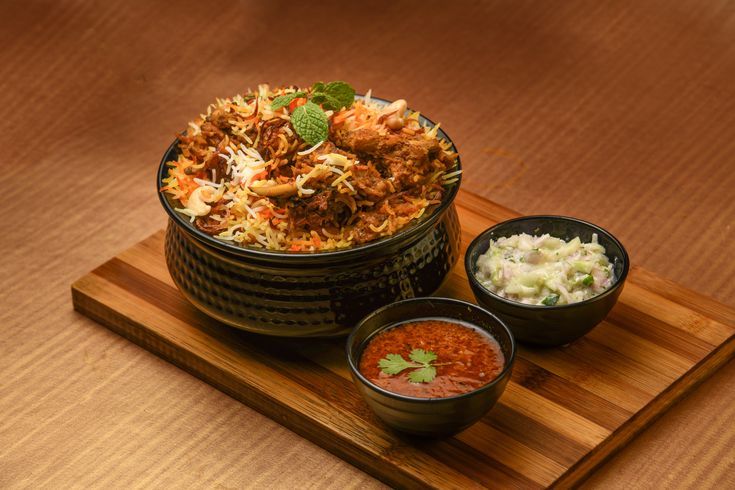A chef's guide on how to make colourful chicken biryani at home

Rich with spices, layered with flavour, and boasting an aromatic profile that wafts through the home, biryani is more than a meal; it is an experience.
Very few dishes evoke as much love and celebration as a well-made chicken biryani.
Unlike pilau, the art of cooking biriyani, many people think it is very hard to prepare, but it is very easy to make with just a few steps.
More To Read
- From hobby to lifeline: How gardening is becoming a path to food security and resilience
- Battle of the dough: What’s the difference between kaimati and mitai?
- How to make perfect chips masala at home – crispy, saucy and full of flavour
- Jifora restaurant: The secret luxury spot transforming Eastleigh's dining scene
- Recipe: How to make spicy Nigerian Jollof rice
- How to make suqaar digaag: The spiced Somali chicken dish making a comeback in Kenya
Rich with spices, layered with flavour, and boasting an aromatic profile that wafts through the home, biryani is more than a meal; it is an experience.
But what makes a biryani truly special? According to Nairobi-based chef Rahma Yusuf, it is the colour, the layers, and the balance of spices.
“Biryani is not just food, it’s an art form,” says Chef Rahma, known for her Swahili-fusion recipes that attract thousands of followers on social media.
“Each ingredient has a role, and the colours tell a story of richness and celebration.”
The secret to the perfect biryani
Chef Rahma begins with a simple principle: marination is key.
“Marinate the chicken overnight if possible, with yoghurt, garlic, ginger, turmeric, chilli, and a squeeze of lemon. This makes the chicken tender and deeply flavourful.”
But the chilli is optional; if you want, you can add paprika.
The next step is preparing the rice.
She recommends using long-grain basmati rice and parboiling it with a few cloves, cinnamon sticks, cardamom pods, and salt.
“Don’t overcook the rice,” she warns. “You want it just underdone because it finishes cooking with the chicken.”
Layers of colour and fragrance
Once the chicken is partially cooked with onions, tomatoes, and biryani masala, it is time to layer.
“In a deep pot, place a layer of the chicken mixture, then a layer of rice, and repeat,” she explains.
“Top it with saffron or yellow food colouring mixed with milk, fried onions, fresh coriander, and mint leaves. This is where the colour magic happens.”
For those who do not have saffron, Chef Rahma suggests a mix of food colouring with a little rose water for aroma.
“It’s not cheating, it’s adaptation,” she smiles.
Cooking technique
The final trick is “dum” cooking, a traditional method of sealing the pot with foil or dough to trap steam.
“You cook on the lowest heat possible for 20-30 minutes. This allows all the flavours to blend beautifully,” she says.
Chef Rahma adds a tip many overlook: don’t stir the biryani after it’s cooked.
“Scoop gently from the bottom, so you maintain the colour contrast and layers.”
Serving and sides
Biryani pairs best with kachumbari (a tomato and onion salad), a tangy raita (yoghurt with cucumber and spices), or a cold glass of tamarind juice.
“Presentation matters,” she notes.
“Serve in a wide dish, garnish with lemon wedges and extra herbs.”
Whether for Eid celebrations, a family Sunday lunch, or simply to impress guests, homemade chicken biryani is a dish that brings joy and pride.
“You don’t have to be a professional chef to make beautiful biryani,” says Chef Rahma.
All you need is patience, good spices and love for feeding people well.
With these tips, your kitchen can become the next best biryani stop.
Top Stories Today














































